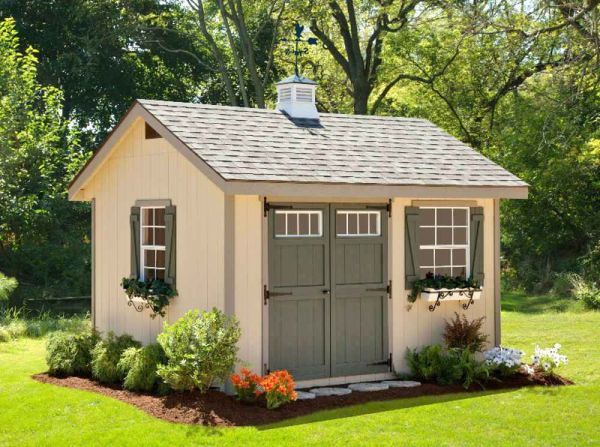Gable Garden Shed Plans Blueprints - Learn How To Easily Plan And Assemble A DIY Shed Step by Step

Isolated sheds are vulnerable to criminals but you can follow these points to help protect your property. When you are not using your shed be sure to lock it securely. Install security lighting around your outbuildings and isolated locations. A secure perimeter around your property will also help deter thieves. Obscure the windows of your outhouse to prevent potential thieves seeing what you have inside. shed doors are notoriously easy to break open so strengthen them with heavy screws and bolts. Visibly mark your machinery and keep a list of your tools (https://sheddrafts.com/10x12-gable-garden-shed-plans-blueprints) with serial numbers. If your property is stolen it will be easier to identify and return with your identifiable markings. Reinforce your outbuilding from the inside to make it more resistant to a break-in. Shackle or chain large items such as bicycles and mowers together and secure them to a permanent fixture. It is important to note that roof trusses are essential to any outhouse building diagrams since they stabilize the whole building. A great tip is to first build roof trusses on the floor and then raise each truss into position after the walls are up.
During build-up be sure that there is no chance of rain so that none of your work gets wet during the process. Framing a roof in the traditional manner using individual rafters can be a challenge for someone who has never tried. You can buy prefabricated roof trusses that will save you time and spare your knees. Roof trusses consist of a prefabricated assembly of two rafters fastened to a ceiling joist. Plywood reinforcement plates should be used to hold roof trusses together. Position your trusses at least sixteen inches apart when installing. Fully built trusses are available and are reasonable for any shed creation plans as they are very cost-effective. You can find many different kinds of prebuilt trusses in any home center. Don’t be fooled by the erroneous belief that permits are just necessary for outsized outhouse plans. However you must apply for a making permit regardless of the size of the outhouse and have an inspector come out to (visit this website) see it. It is important to get a proper permit so that you will not be forced to disassemble your shed if it isn’t to code.
You should not be intimidated by the designing inspector as he can be an invaluable resource when constructing your outbuilding. He can also make suggestions that will save you money and time in the long run. Building inspectors can recommend the best setting up technique and materials for your space. Most importantly the creating examiner will ensure that you will avoid having to correct any structural violations. Town officials also need to approve the site to ensure it isn’t sitting on wetlands or any other controversial areas. Another upside to getting your permit first is that you know you will not have to move the outhouse later. Call your local putting together department for any specific information you need about your town’s rules.
Procesando video...
Insulation can be harsh to work with so always wear a dust mask and gloves. You must start by measuring the interior height of your walls. One type of insulation is a sheet of treated plastic commonly known as an air barrier. Consider including elastic insulation in the backyard outbuilding blueprints because of its low cost. Drafts of cold air from outside will have a harder time entering the shed once the barrier is in place. Layer and overlap the plastic air barrier on the walls in the outbuilding fastening as you go. Place whatever kind of siding the shed crafting blueprints call for to use atop of the air barrier. A great layering insulation that is often times used is well-known fiberglass. Using fiberglass requires that you cover it with another layer as it is irritating to the skin. Drywall works well as a fiberglass cover and can also be easily painted.